Techniques
Deadheading is the removal of old or spent flowers and is beneficial to most herbaceous ornamentals. Seed production can drain a plant’s energy and cause foliage to deteriorate. Deadheading can promote vegetative and root growth rather than seed production. By deadheading you can prolong bloom periods, initiate a second smaller bloom, improve overall appearance, and prevent self-seeding. Some examples of species that benefit from deadheading are: Daylilies, Hostas, Lady’s Mantle, and Lambs Ear. Cutting back refers to pruning a plant to renew its appearance or encourage a new flush of growth or flowering, control its height or flowering time. Pinching can accomplish the same objective. If you travel for several weeks, you can cut certain plants by one third to delay bloom time until you get back home. Examples: Dianthus, Candy Tuft, Moss Phlox, Catmint, Geranium Amsonia, Baptisia, Achillea, Aster, Mums, Sedum, Joe Pye Weed. Pinching allows for experimentation and usually involves removing only the growing tips. Generally do this early in the growing season because it will delay bloom time. Examples: Sedum, Shasta daisy, Joe Pye Weed, Aster, Artemisia. Thinning can prevent disease, create sturdier stems, and increase the size of flowers. It can often help to increase air circulation to help prevent powdery mildew. Use this on: Aster, Delphinium, Mondarda, Phlox, Bulgeweed, Lambs Ear, and Lady’s Mantle. Disbudding involves removing side buds so that the plant’s terminal bud produces larger flowers on a longer stem. Removing the terminal bud will cause the side buds to produce smaller but more flowers; it can also eliminate the need for staking. Examples: Mums, Carnations, Pinks, Dahlias, Peonies. Deadleafing removes individual dead leaves to improve appearance. Examples: Elijah Blue grass in spring, Lady’s Mantle in summer, and Hellebores (Lenten Rose) in the spring. A great source of information on all these techniques is The Well-Tended Perennial Garden by Tracy DiSabato-Aust, Timber Press, 2006. Article and photo credit: Sue Reinardy, Master Gardener
0 Comments
More helpful practices:
Organizations:
Blog and photo credit: Sue Reinardy, Master Gardener Left to right: Large-leaved Aster, False Solomon's Seal, Swamp Milkweed, Wild Bergamot There’s new terminology for letting your garden get a little wild: rewilding. I’ve been doing this for years without putting a name to inattentive gardening, but now it’s in vogue. Love that! This week has been declared Pollinator Week by the University of Wisconsin Horticulture and rewilding the garden fits right into adding more native plants to our gardens. By letting nature do some of the planting we can increase native vegetation that pollinators appreciate. In looking through Heather Holm’s book, Pollinators of Native Plants, many of the plants look familiar. This book is an excellent field guide for pollinator plants. Here’s some that have established in my gardens without much effort on my part.
Blog and Photos by Sue Reinardy, Master Gardener Wild Perennial Lupine (Lupinus perennis) is a showy native wildflower that blooms in late spring with spikes of blue and bluish-purple flowers. This species prefers sandy soil and full sun. Once established, it will naturalize, attracting bees, birds, butterflies, and hummingbirds.
While most people know about the relationship between monarch butterflies and milkweed, the Karner Blue butterfly has the same kind of relationship with the wild lupine. The Karner Blue was federally listed as endangered in 1992. This butterfly is most widespread in Wisconsin and the state has implemented a Wisconsin Habitat Conservation Plan. Habitat throughout the range of the Karner Blue butterfly has been lost as a result of land development and lack of natural disturbance, such as wildfire and grazing by large mammals. Such disturbance helps maintain the butterfly’s habitat by setting back encroaching forests, encouraging lupine and flowering plant growth. Submitted by Linda Anderson, Certified Master Gardener The bright red flowers are pollinated by hummingbirds and are enormously attractive to these birds. Butterflies and bees will also visit the flowers. Because the flowers open from the bottom to the top over a period of several weeks, this plant provides lasting nectar for pollinators. The flowers are followed by capsules containing numerous tiny seeds. It is considered a short-lived perennial because it will die after blooming, although offsets will continue growing to perpetuate the plant. Under the right conditions cardinal flower will readily self-seed.
Cardinal flower is easily grown in moist soils in full sun to partial shade. It has few pests and is not favored by deer or rabbits. Use cardinal flower in borders, rain gardens, and native gardens, especially on the edges of streams or ponds. They will naturalize in moist meadows and can be grown in a shallow water garden or in containers. Submitted by: Linda Anderson, Certified Master Gardener North Country Master Gardener Volunteer’s perennial garden is located at Spooner Ag Research
Teaching and Display Garden. It was completely redesigned and replanted with pollinator friendly and native plants completed in spring 2016. We saw the perennial garden as an ideal space for creating a Monarch and Pollinator Sanctuary (MAPS). We undertook this project as we learned more about the loss of pollinator habitats. Habitat loss is a result of disease, parasites, environmental contaminants and development of pristine land. Habitat loss contributes to the decline of many species of pollinators. The well-known and celebrated annual Monarch Butterfly migration south for winter and back north in Spring is a huge natural phenomenon, but has faced diminishing numbers of butterflies. Three-fourths of the world’s flowering plants depend on pollinators to reproduce. Most fruit, vegetable, seed crops - and other plants that provide fiber, medicine and fuel are pollinated by animals. A significant portion of the food we eat exists because of animal pollinators such as bees, butterflies and moths, birds and bats, beetles and other insects. Bees are the main pollinators for fruits and vegetables. They nest underground, in twigs and dead trees. There are over 250 species of bees native to North America. Bees are often considered pollinator superheroes, having adaptations which allow them to collect and transport pollen and nectar. They have the unique ability to “buzz pollinate” plant species with pollen but no nectar, such as tomatoes, cranberries, apples, cherries, blackberries, blueberries, alfalfa, red clover, snapdragons and foxglove. Butterflies seek nectar in the daytime, moths at night. Monarch caterpillars need milkweeds to grow and develop – common milkweed is most important although a variety is recommended. Monarchs need nectar to provide energy to breed, to sustain their migratory flights and to build reserve for w nter. Butterflies can see red, and love colorful flowers in warm colors. Hummingbirds are the most common avian pollinators in the US, and they love the color red. Two species of bat are major pollinators in the desert Southwest. Beetles and other insects are common flower visitors and pollinators. My personal favorite is the Midge fly, the only animal small enough to pollinate the cocoa flower, giving us billions of pounds of chocolate annually! MAPS provides habitat for pollinators to help them thrive. Measures incorporated into the garden include: • pollinator friendly plants, shrubs and trees • mix of plants with various colors and bloom times • no insecticide use • bee nesting boxes • natural compost for fertilization • removal of invasive species • thinning and mulching plant beds • trees, shrubs and vines as well as fruits and flowers Our Monarch and Pollinator Sanctuary continues to thrive, and is a designated Monarch Way Station. You are welcome to visit – we are always open! Author: Janet Mangold, Master Gardener Volunteer Growing and Caring for Plants in Wisconsin: Foundations in Gardening. Registration opens July 18, 2022!
Take your next step to growing plants successfully using research-based methods! You’ll leave the course with a combination of practical gardening skills to try plus the knowledge of why they work. Plan your calender now! Course dates: September 11, 2022 - December 10, 2022 If you have questions or want to learn more, please visit UW's website! Sign up for the waiting list to be reminded when registration begins. This is an approved learning opportunity for individuals interested in the Wisconsin Extension Master Gardener Program, To find out more check out the Master Gardener website. WISCONSIN CELEBRATES POLLINATOR WEEK
June is designated National Pollinator Month to bring attention to what we can do to support habitat for pollinators. There are several programs throughout the month showing how we can help pollinators in our backyards. The North Country Master Gardener Volunteers invite you to join them on June 23, 2022, between the hours of 4:00 and 7:00 p.m., to tour the Monarch and Pollinator Sanctuary Garden at the Spooner Agricultural Research Station’s Teaching and Display Gardens. Volunteers will be on-hand to give guided tours, answer gardening questions and showcase the dozens of different pollinator species established in the gardens. The Teaching & Display Garden is open to the public for self-guided tours during the growing season and is located 1 ½ mile east of Spooner on Orchard Road, off Highway 70. Wisconsin Celebrates Pollinator Week, June 20-26, 2022, raising awareness through statewide and local activities and events. By increasing knowledge and adopting pollinator friendly practices, we can improve pollinator health and habitats. National Pollinator Month is an annual event managed by the Pollinator Partnership to help spread the word about what we can do to protect pollinators. Pollinator Week Webinars hosted by UW-Extension/Horticulture. Webinars are free, but registration is required for each one. Webinars will be recorded for later viewing. For more information and links to register, go to https://hort.extension.wisc.edu/pollinator-week/ *June 20 - Pollinator Gardens: Plant Selection and Garden Care *June 21 - Join in Community Science with the Wisconsin Wild Bee App *June 22 - Wisconsin’s Busy Bees: Getting to Know the Bees in Your Area *June 23 - 10 Things to Consider for Weed Management When Establishing Pollinator Plantings *June 24 - How Do Pesticides Affect Pollinators and Songbirds in Your Yard 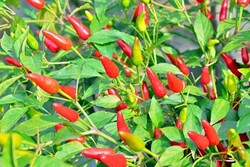 By Vicki Gee-Treft Pepper “Buffy,” a 2022 All America Selections’ (AAS) National Winner, will do right by you by producing a good yield of 250-280 juicy, thick-walled green to red fruits on a strong, 28-inch upright plant. Buffy’s fruits (slightly triangular, 1.4” x 0.6”) are more attractive than the comparisons as well as slightly larger making them perfect for flavorful sport peppers but also for use in other applications. The peppers are held high on the compact plant adding ornamental value to the garden. Buffy was faster to mature than “Tobasco” in the AAS trials with a bit less heat than “Ascent” until the seeds are added in. Its flavor has a high pungency with aroma, at 500,000 Scoville units. In summary, Buffy deserves its moment of recognition and deserves a place in your garden (18-25” space) or container. Hot pepper is a strong, heat tolerant crop, so germinate seeds in the substrate or sand with proper irrigation. After 35 days, transplant the strongest seedlings to the garden field. On the 20th day after transplanting, remove all the leaves and side shoots below the second branch, which can effectively boost the flowering and fruit set. The yield of this hot pepper is heavy, so it requires a staking system or kind of supporting rope to keep the plant upright. Hot pepper requires a good fertilizer, and a sufficient base fertilizer and monthly side dressing is recommended. “Excellent flavor. Crazy heat. Attractive plant. No diseases. All around a delight.” “You can actually separate the flesh from the septum and seeds allows you to control the level of heat allowed into your culinary activities.” “If you had a BIG pot for your deck or patio, you could grow this in a pot, but the plants were all vigorous and would quickly outgrow something you might typically consider a patio pot.” This prized distinction winner will be planted at the Teaching & Display Garden at the Spooner Ag Research Station and available for your viewing this summer. Photo and additional information credit: AAS (https://all-americaselections.org/product/pepper-buffy/) 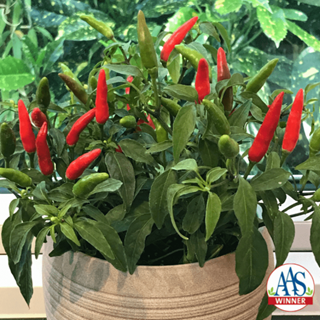 By Vicki Gee-Treft Mighty, strong, hot, and quick! What more might one want in a hot Thai-type pepper? A 2022 All America Selections’ (AAS) National Winner, Quickfire Peppers produce plenty of hot delicious fruits on a compact, 6” sturdy plant that is perfect for container gardening. No staking is required. This 1.7” conical pepper has tremendous ornamental value but was bred for its taste and yield. Culinary gardeners will definitely want to give this gem a try in their Thai and other Southeast Asian dishes where a little heat and kick (40,000 Scoville) give the meal some quickfire! Germinate any time of year (spring preferred) in warmth in small trays or pots with good quality, moist compost with an ideal compost temperature of 77-86F. Germination should take around 14 days. Once the seedlings are large enough to handle, carefully prick them out into individual small pots or plug trays and grow in warmth and good light. Continue to increase the pot size as they grow, eventually using up to a maximum of a 6″ pot. The compost should be kept moist but not wet and grown in good light, preferably in a sunny location. The plants will remain very compact (6″ or less), bushy and flower, producing upward pointing fruits very quickly, within 60 days from sowing. The fruits quickly ripen to bright red and should be harvested regularly to ensure the plant continues to flower and produce more fruit. The extremely compact habit and very early fruiting make this variety ideal for growing on sunny windowsills around the home or for containers or bedding outdoors in the warmer months (not frost hardy). Space plants 18” apart. Comment from one AAS Judge: “Hot little buggers. From a home garden perspective, these little plants are right on the money. They almost look like a large ornamental pepper and could probably be used as such in a mixed patio container. The mature fruit had a good flavor and was darn hot.” This prized distinction winner will be planted at the Teaching & Display Garden at the Spooner Ag Research Station and available for your viewing this summer. Photo and additional information credit: AAS (https://all-americaselections.org/product/pepper-quickfire/) |
|
| North Country MGV | gARDEN bLOGS |
Location |
|
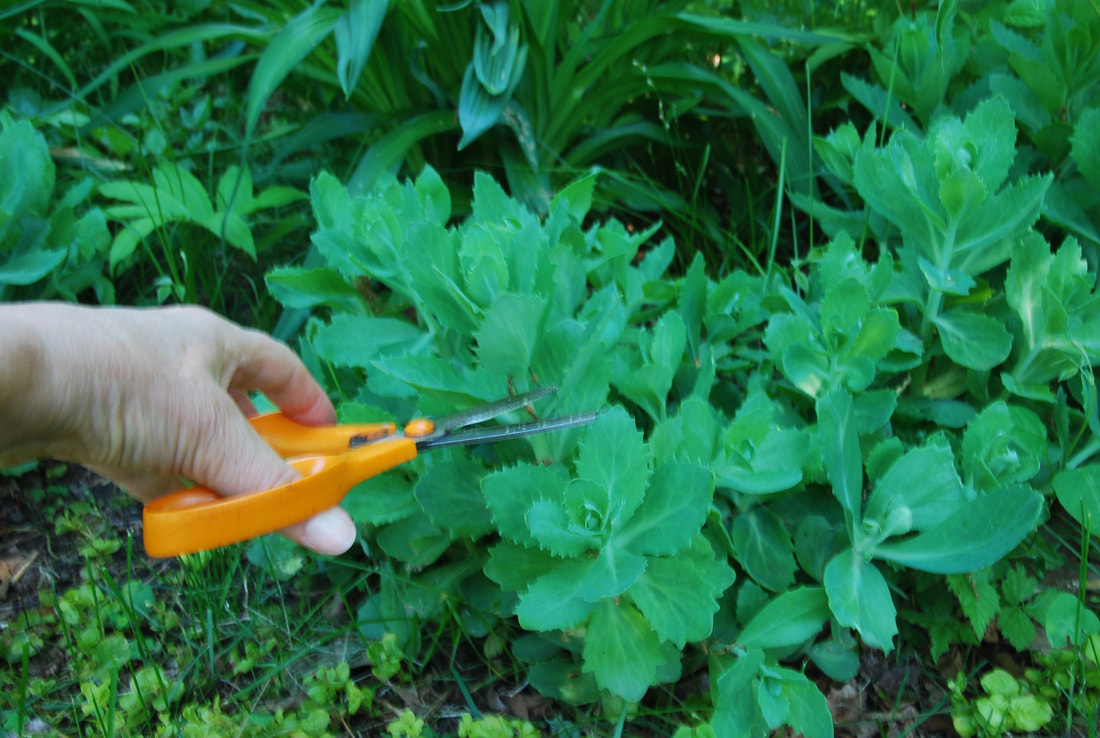

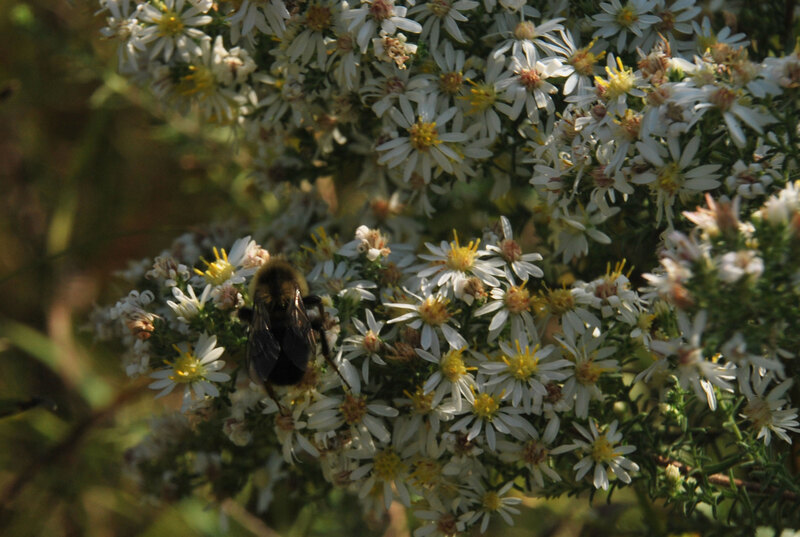
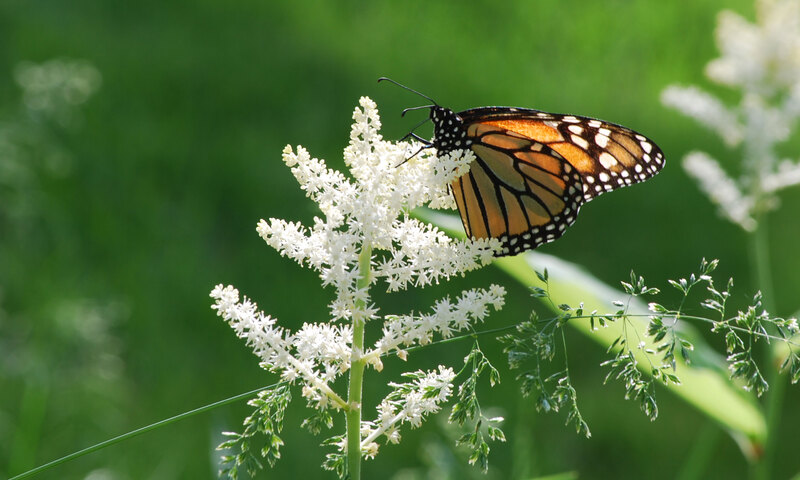
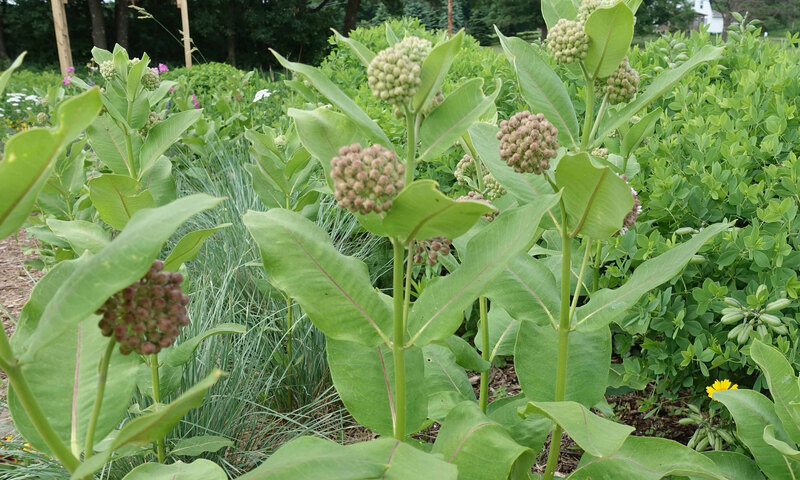
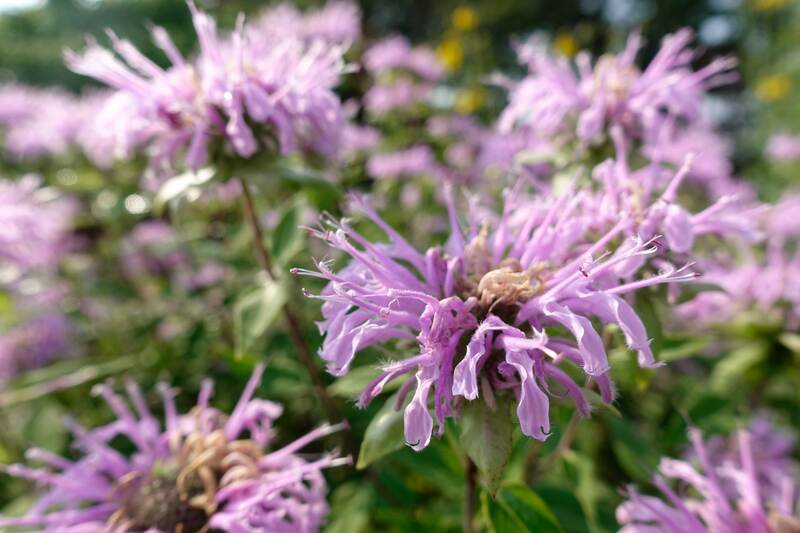
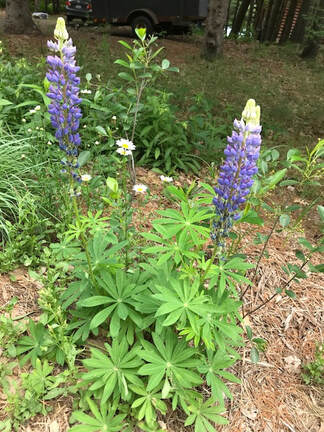
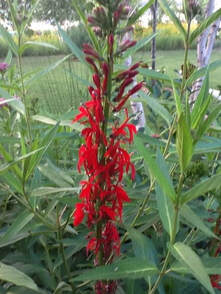
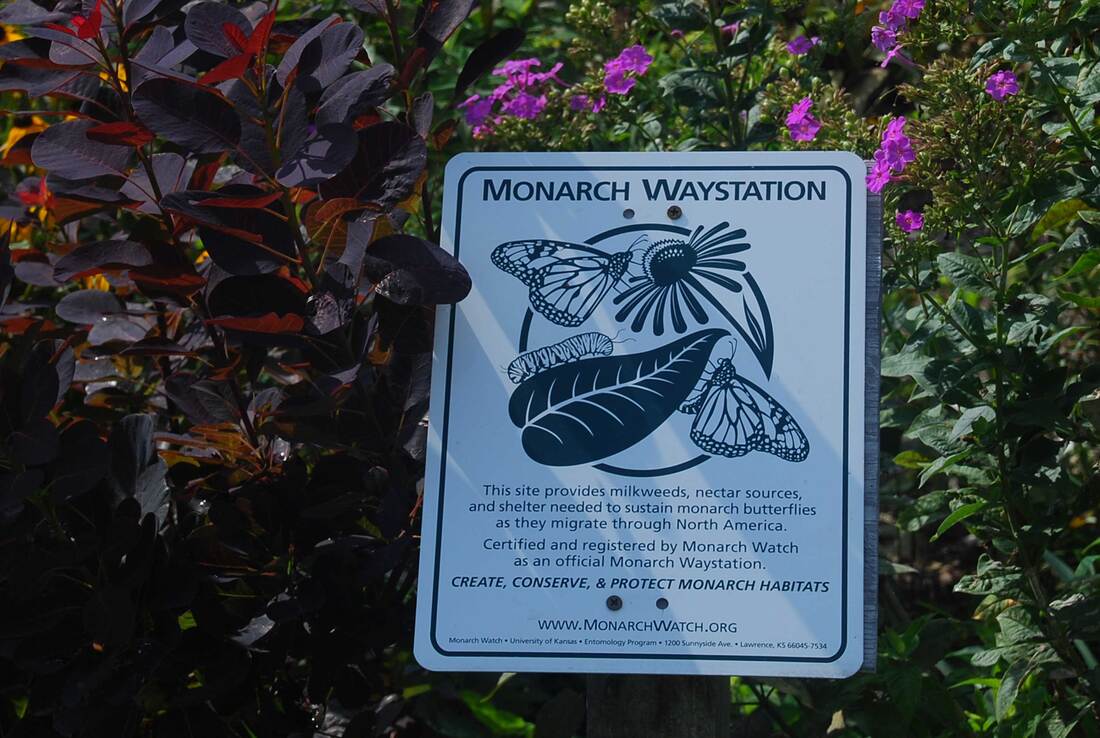
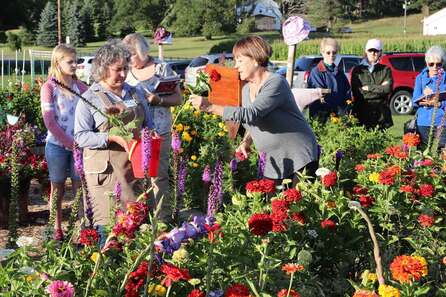

 RSS Feed
RSS Feed